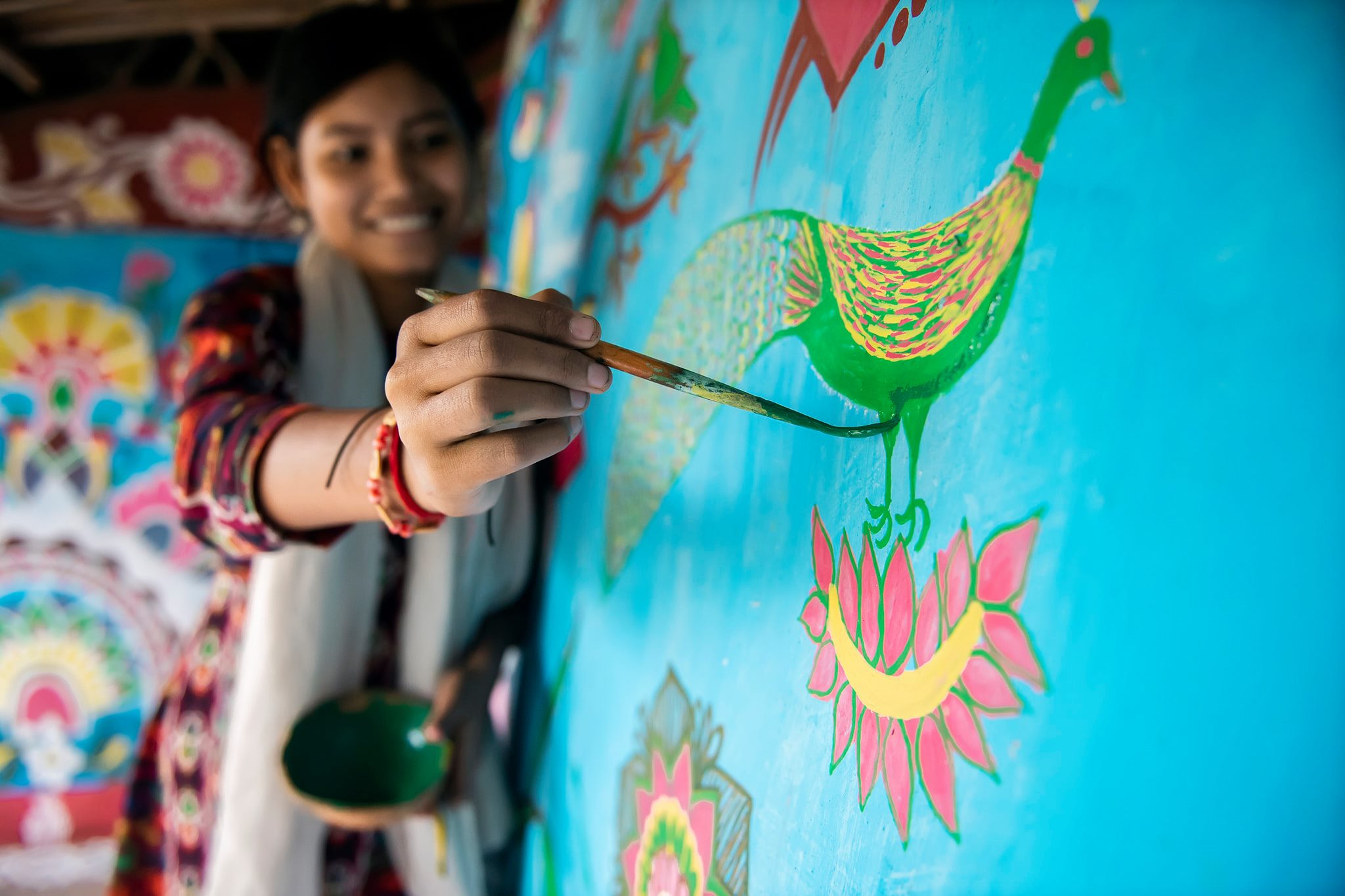Submitted by Arefin Chisty
Alpona Village in Bangladesh
Bangladesh Architecture News - May 02, 2021 - 19:22 11451 views

Alpana (Ritual Painting) is a unique form of esthetical expression of local values & emotions, folk stories, and lifestyle perpetuated by the female for a long time.
They maintain links to old traditions and are at the same time audacious enough to experience modern styles and new colors. They are aware of the shifting seasonal moods because the changing duration of the year marks their imagination. However, the root of the alpana is hard to ascertain. The word "alpana" may have come from Sanskrit 'alimpana', meaning "to cover with a plaster." According to some theoreticians, Alpana is derived from the word alipana, i.e. the craft of making afflicts or banks. Alpana does not appear in any one of the old art literature, except the term Rangavali.
Rangavali means 'colored crypts,' as is very obviously indicated by the portrayal of this art as a kind of Alpana. The elegance and technique of these compositions can be seen clearly in Sanskrit works like Kadambari and Tilakamanjari. In later books, as Kajalrekha and other works, a detailed description of alpana paintings is found.
Many authorities argue that the vratas and pujas synonymous with alpines can be traced back to pre-Aryan times, who were living in the country long before the Aryans came to us might have come down. The Ritual and ancient Folk Arts of Bengal (including Alpana) were originally a part of the pre-agricultural communities, which supplied sufficient crops and expelled evil spirits.
 Image courtesy of Nur Bhuiyan
Image courtesy of Nur Bhuiyan
According to Rabindranath Barman, a local farmer, this tradition has been kept alive at the hands of the females since his childhood.
Alpana artist Dekhan Barman said that there may not be a mud house at one time, but the women of this village will keep the tradition of painting Alpana even in a pucca house (brick building).
Tikil is a village in Nezampur union in Nachol upazila of Chapainawabganj district, Bangladesh. About 90 Hindu families live in this village, which is associated with the memory of Ila Mitra, the leader of the Tebhaga movement.
All the women of the village are painters. To the women of the village, the walls and floors of every house are like a canvas. With the touch of their hands, every house, from the kitchen to the bedroom, the walls and the floor of every house are full of craftsmanship. Other Alpana artists Prabhati Rani, Dhirendra Barman, and Pradeep Chandra Barman said that before painting Alpana, local red clay, chalk, and white paint soaked in rice were used. These were mixed with various natural tree strands to make Alpana last longer. Alpana is painted with the colors available in the market now.
They usually decorate their houses with alpona during religious festivals like Durga puja, Saraswati puja, Laxmi puja, and Kali puja, and other festivals like Nabanna Utsab, Pahela Baishakh, and wedding ceremony.
Visitors from different corners of the world keep visiting the village just to learn about our folk art; an art form of communal harmony.
 Image courtesy of Nur Bhuiyan
Image courtesy of Nur Bhuiyan
 Image courtesy of Nur Bhuiyan
Image courtesy of Nur Bhuiyan
Top image courtesy of Nur Bhuiyan
